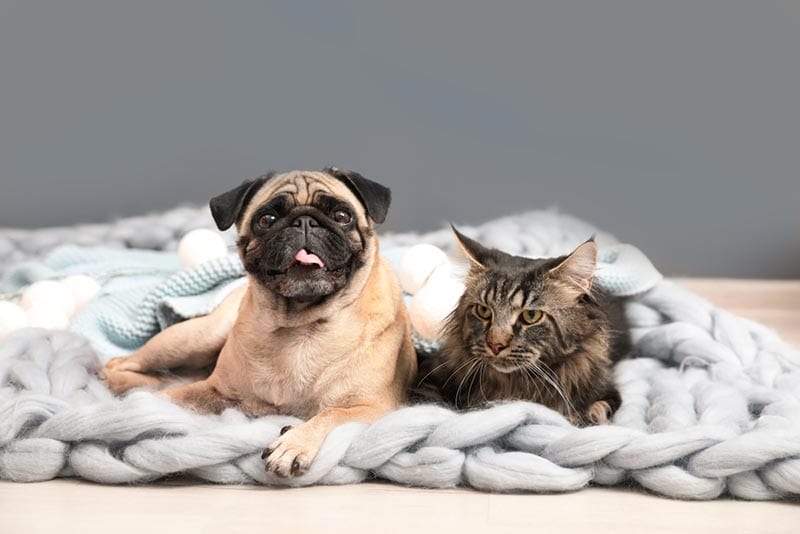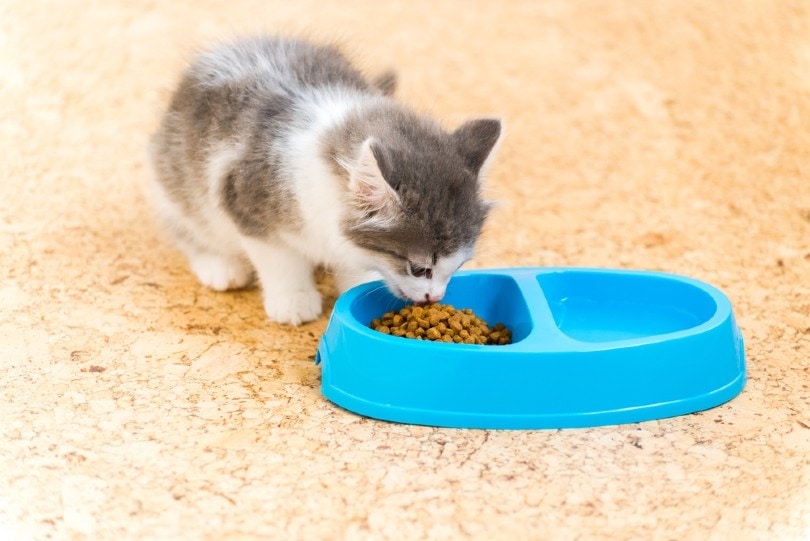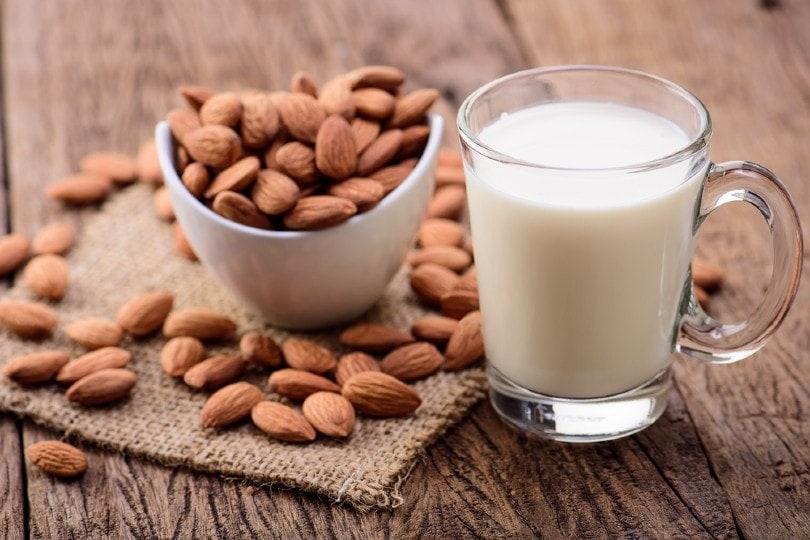Grey Persian Cats: Facts, Pictures, Origin & History
By Oliver Jones
Updated on
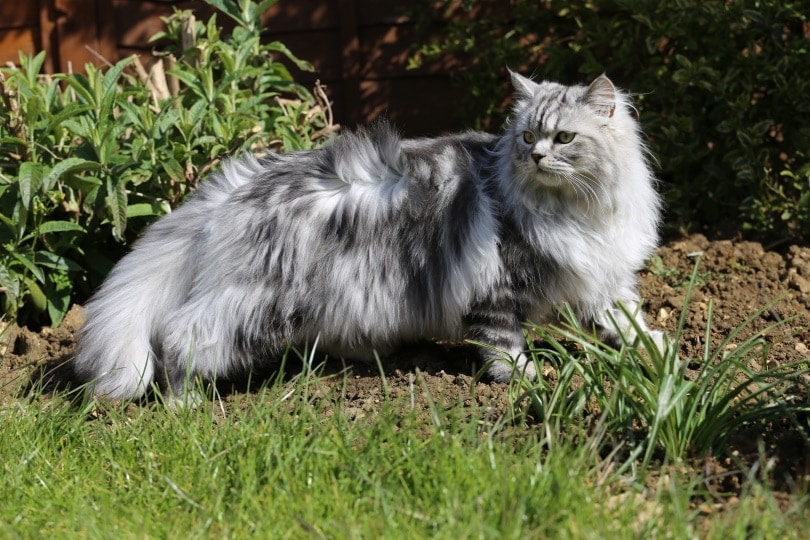
Click to Skip Ahead
The Persian, which dates back to the 1600s, is a favorite with modern cat lovers, and the Grey Persian is one of the most popular variants of this fluffy, characterful breed. The grey fur serves to make the coat even fluffier.
White and silver are the most common colors of this breed, but grey, orange, black, and combinations of these hues are also popular.
 The Earliest Records of Grey Persians in History
The Earliest Records of Grey Persians in History
The Persian cat is believed to date back to the 1600s. In 1620, white Angora cats were imported to France while grey Khorasan cats came from Turkey. Although modern Persian cats no longer trace their DNA to their original ancestors, this represents the march of the Persian and the increase in its popularity. And, while it is the white Persian that is now considered the standard of the breed, grey breeds are a popular variant.
The modern Persian cat was first recognized in the 19th Century when breeders attempted to differentiate them from the Angora cat. The differences between the two breeds are that the Persian has a rounder head and the Angora generally has a longer coat than the Persian. However, the two standards have been combined so that the two are quite similar.
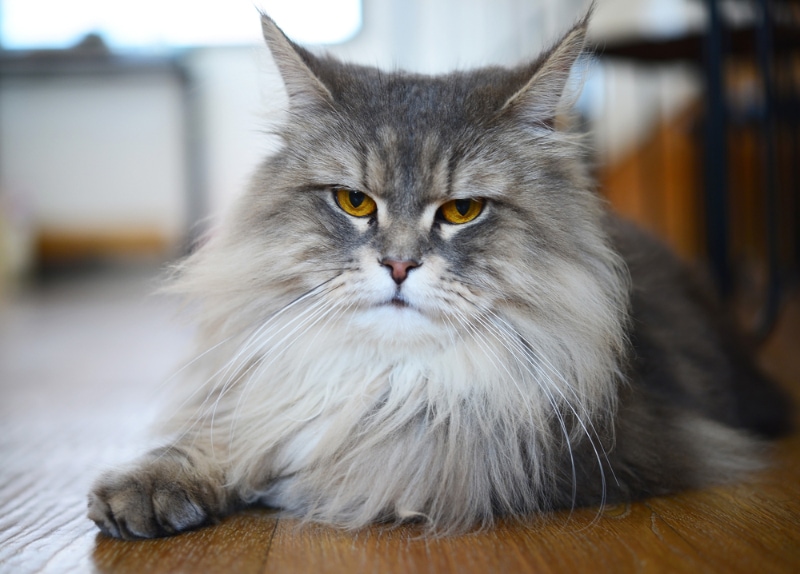
How Grey Persians Gained Popularity
The first named Persian was actually shown at the very first cat show, at Crystal Palance in London. This 1871 show attracted 20,000 visitors and the “best in show” award was given to a Persian cat, beating off Scottish Wild cats, Siamese, and Angora cats, in the process.
It wasn’t until around 1900 that the breed made its way to the USA. Although exact dates are unknown, the Persian was one of the earliest and first recognized cats in the country.
Their distinctive face and lush-looking coat made them popular with owners, and their use in popular culture further increased this popularity. Celebrity fans have included Queen Victoria and Marilyn Monroe, while these beautiful cats have featured in James Bond movies, other film franchises, and a host of TV shows, as well as in art and advertising campaigns.
Formal Recognition of Grey Persians
Following the formation of the Cat Fanciers Association (CFA) in 1895, the Persian was one of the first breeds to be formally recognized, added to the registry in 1906. The registry allows for any of a vast range of colors and markings, including grey.
According to the CFA, solid-colored Persians, other than white, have copper eyes. The coat color should be solid down to the roots and free from markings.
The breed is also recognized by other national and international associations, including the UK’s Governing Council of the Cat Fancy, the Canadian Cat Federation, and the Australian Cat Federation.
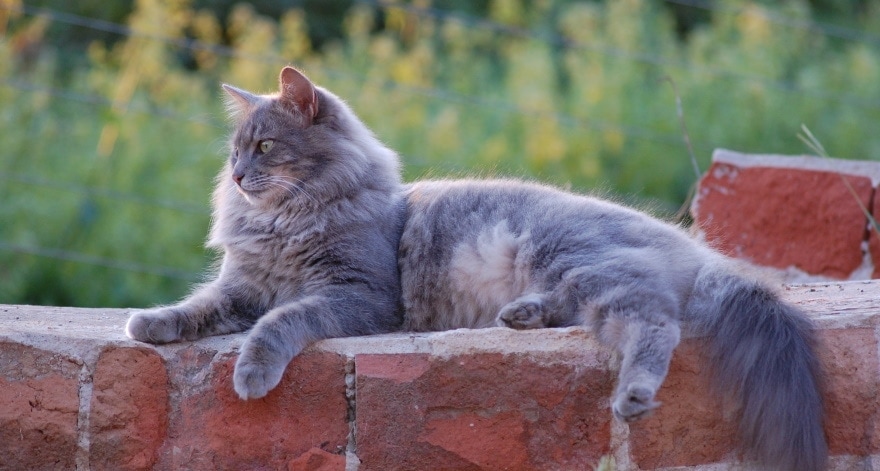
Top 4 Unique Facts About Grey Persian Cats
1. They Are Adored in the USA
After being added to the ranks of the Cat Fanciers’ Association, the Persian has gone on to become one of the most popular breeds in the country. Recent figures suggest that it is now the fourth most popular breed in the country, and the Exotic Longhair, which some cat fanciers and even some cat fancier associations consider to be a variant of the Persian, features as the second most popular.
2. They’re High Maintenance but Not Divas
The luscious coat and the undeserved reputation as a diva cat mean that the Persian is thought of as being high maintenance. The breed requires regular grooming, but doing so means that you will have fewer problems, and the Persian takes a lot less work than most prospective owners imagine. And, while they do take some work, they are friendly and sociable, which makes them a popular choice for a family pet.
3. Not All Persians Have Flat Faces
The breed is well known for its flat face but, in reality, this is just one feature, and not all variants of the Persian have a particularly flat face. The traditional Persian, which is also known as the doll-face Persian, has more traditional features. It is the peke-face, also called the ultra-type, that has flattened facial features. Persians with traditional features may be less prone to certain illnesses and conditions, especially breathing and respiratory conditions.
4. Grey Is One of Many Color Options
The grey Persian is attractive and has a fluffier coat than the white Persian. However, grey and white are just two of the available colors. Other colors include silver, black, blue, and chocolate. Patterns including calico are also available, and all are considered official colors and markings according to breed registries.
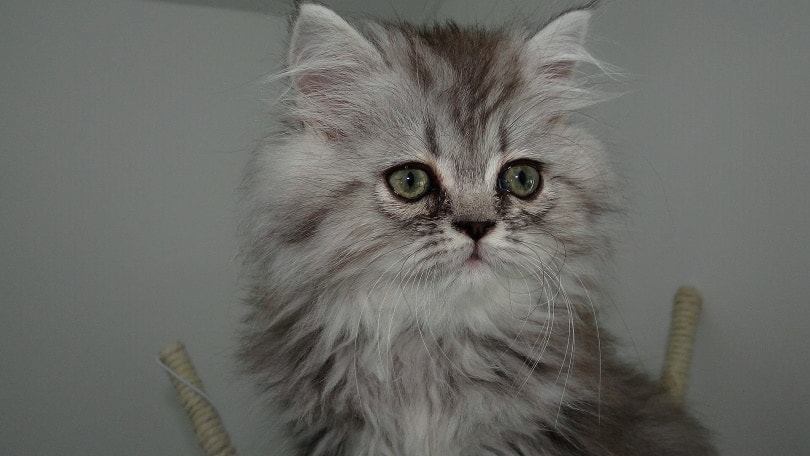
Does the Grey Persian Make a Good Pet?
The Grey Persian is a popular pet choice. It does require regular grooming to maintain the coat, and the flatter-faced variants of the breed can suffer from some ill health, but despite the reputation for being divas, the breed is friendly, will get along with all family members, regardless of their age, and are usually sociable so get along with visitors and strangers, too.
As well as being friendly, the breed is smart and intelligent. Some examples of this breed have been taught to respond to some basic commands and they enjoy playing games with their owners.
Do be aware that the breed is prone to problems with the heart, as well as being more likely to suffer eye, kidney, and bladder issues. They are also prone to the breathing difficulties associated with brachycephalic cat breeds, so you should consider getting insurance for your Persian.
 Conclusion
Conclusion
The grey Persian is one of the most popular variants of the popular Persian breed. Considered one of the oldest cat breeds, the Persian is a long-haired cat that can come in a variety of colors and markings.
Having featured in the world’s first exhibition at the turn of the 20th Century, it has established itself as one of the most popular breeds and is still listed as being the fourth most popular breed in the USA. It is widely recognized by fancier associations around the world, as well as being beloved by owners.
See Also:
- Orange Persian Cats: Facts, Pictures, Origin & History
- Black Persian Cats: Facts, Pictures, Origin & History
Featured Image Credit: Cattrall, Shutterstock
 The Earliest Records of Grey Persians in History
The Earliest Records of Grey Persians in History

